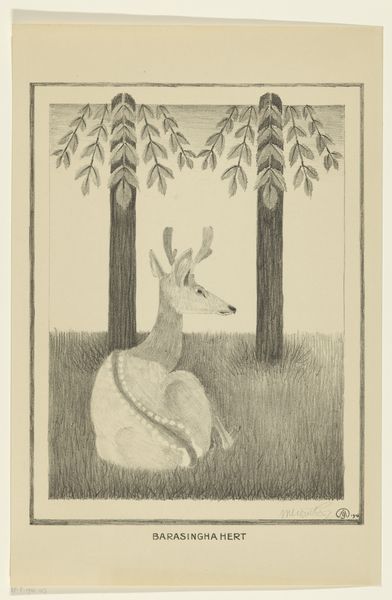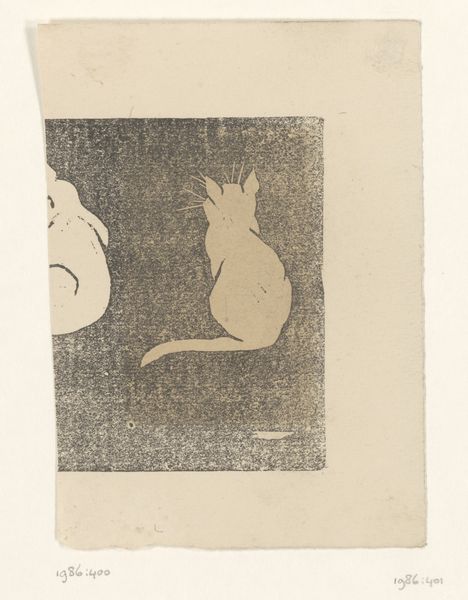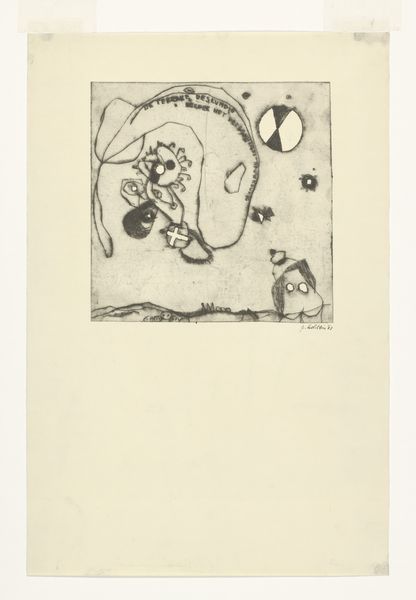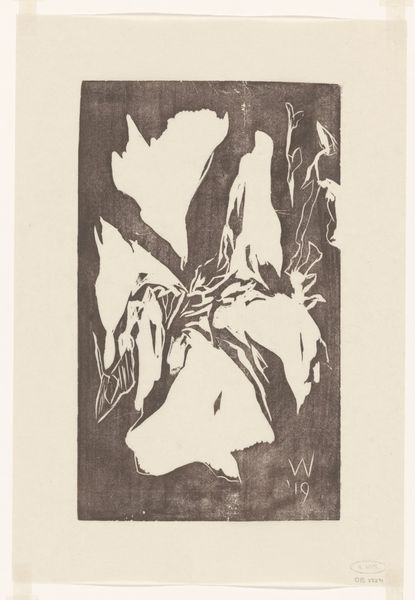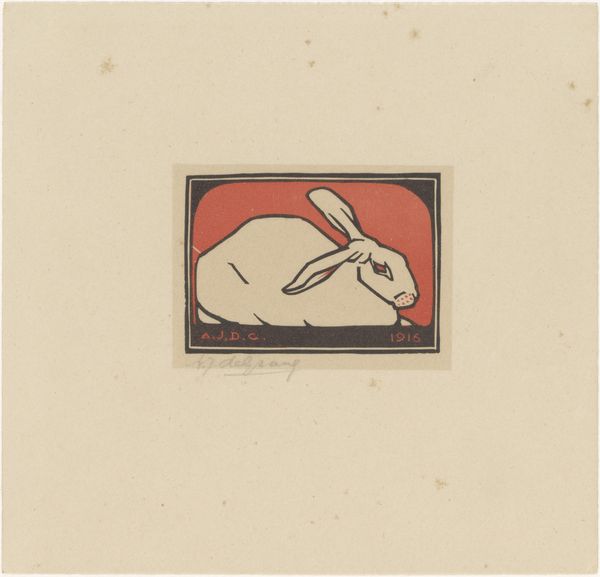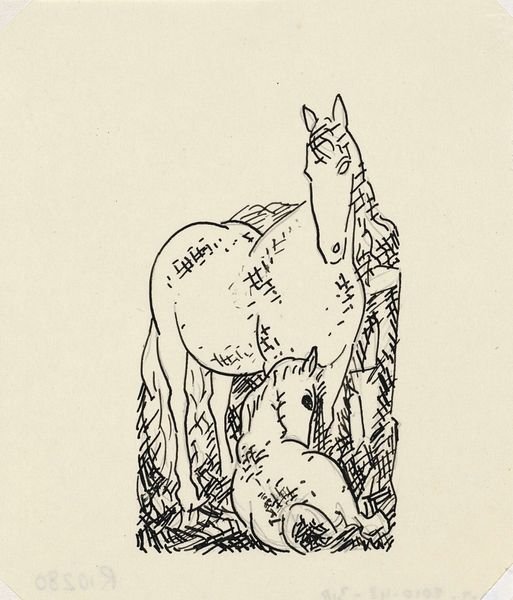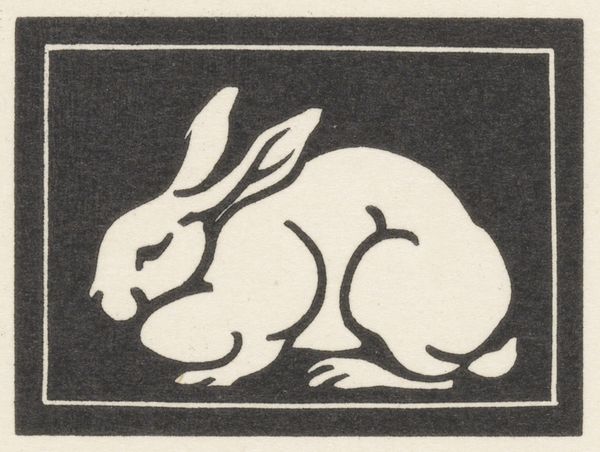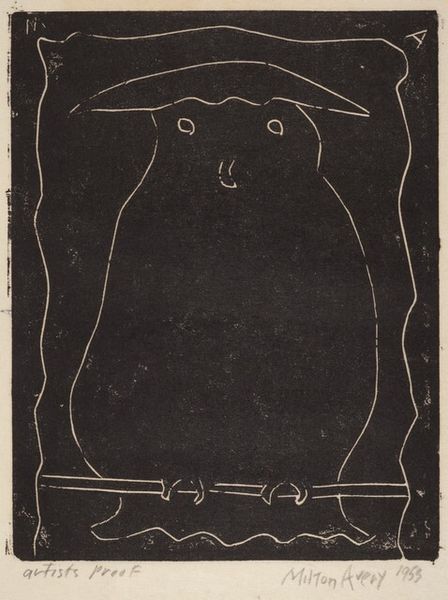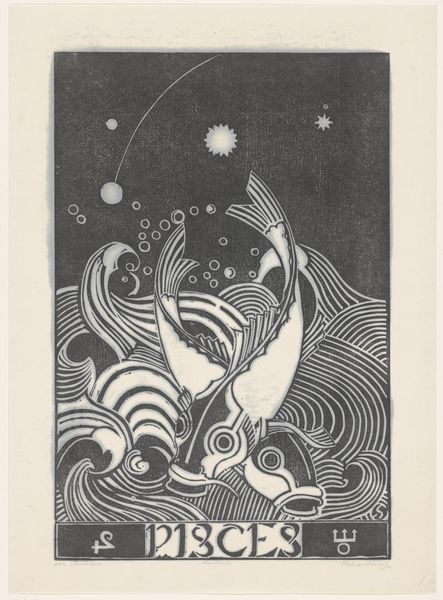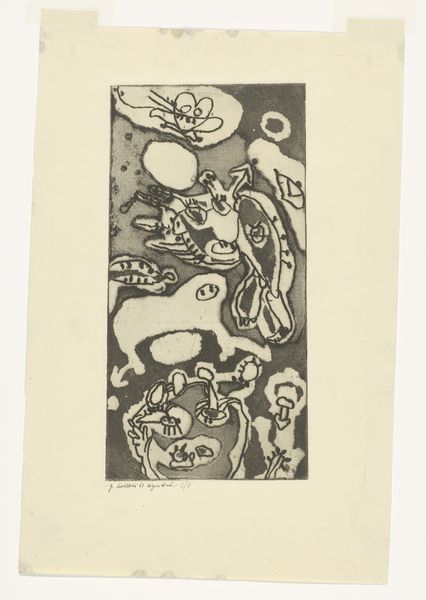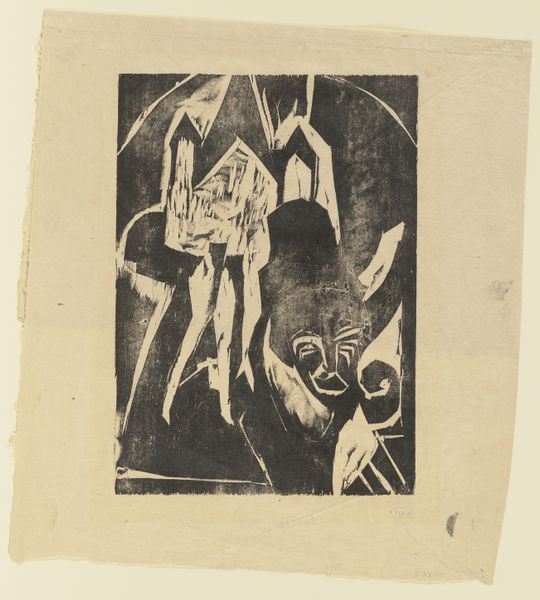
drawing, print, woodcut
#
drawing
#
art-nouveau
#
animal
# print
#
landscape
#
figuration
#
woodcut
#
symbolism
#
sketchbook drawing
Dimensions: height 233 mm, width 277 mm, height 178 mm, width 145 mm
Copyright: Rijks Museum: Open Domain
Curator: What a striking print. This is “Twee sneeuwhazen,” or “Two Snow Hares,” a woodcut made in 1911 by Samuel Jessurun de Mesquita, currently held at the Rijksmuseum. Editor: Immediately, I notice the intimate quality of this image. The way the two hares are positioned one above the other creates a sense of closeness, a quiet communion almost hidden away by the framing trees. Curator: Mesquita’s prints, particularly his animal studies, were quite innovative for the time. He was operating in a period where artists were really questioning traditional representation. His embrace of woodcut, a traditionally folk medium, was quite radical in the fine art circles of the early 20th century. Editor: Absolutely. And I see in this woodcut symbolism related to vulnerability and watchfulness. Hares, often associated with fertility and the moon, gain a different resonance when seen pressed together in this stark, linear landscape. There is both fear and safety implied, two sides of the same symbolic coin. The vertical strokes filling the backdrop act almost like prison bars. Curator: An interesting read! You know, Mesquita taught M.C. Escher, and you can see that influence already germinating here. It's more than just technique. Mesquita's work served as a space for experiment. This one really embodies the Dutch Art Nouveau movement, with its blend of nature and stylized design. How the art scene supported such departures says a lot about its tolerance at that time. Editor: I agree. There’s also something primal about the starkness, the high contrast. The black and white imagery removes all color distraction to emphasize shape. By pairing that visual impact with this subject matter, viewers can dive right into their instinctive association with nature. They can respond from feeling, which I think still speaks to modern sensibilities. Curator: I hadn't considered that, and that is fascinating. Editor: Ultimately, this seemingly simple image encapsulates complex ideas. I am particularly inspired to understand art historical objects that feel accessible in any context. Curator: Precisely! It bridges that historical gap through recognizable, almost iconic imagery, enabling contemporary engagement with a different historical context.
Comments
No comments
Be the first to comment and join the conversation on the ultimate creative platform.
